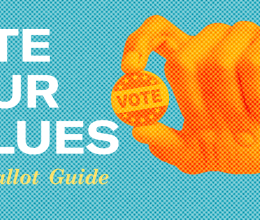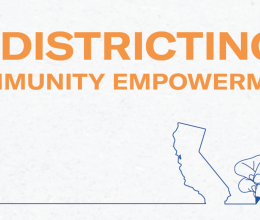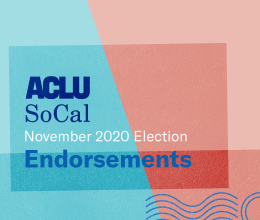The ACLU of Southern California has filed a federal lawsuit [Taylor vs City of Los Angeles 98-1979 GHK (RNBx)] against the City of Los Angeles Recreation and Parks Commission for violating the First Amendment rights of a 23-year-old muralist. The Commission prohibited Richard Taylor from installing a public mural at the Venice Graffiti Pit although his work had been approved by the Cultural Affairs Commission and the Social Public Art Resource Center (SPARC) which coordinated the project.
The lawsuit calls the City's action a violation of free speech under the federal and California constitutions. Further, the suit says action violates the Los Angeles Uniform Building Code which prohibits censorship of "an ideological, political or other non-commercial message on a sign," and an unconstitutional interpretation of the Code. Additionally, the suit claims that the Commission requires artists to waive their rights under the California Civil Code. The ACLU seeks an injunction to stop the City from blocking Taylor's work, a declaration that the City's action violates free speech, that the Uniform Building Code covers public and private property, and that requiring artists to waive their rights in unconstitutional.
Stephen Rohde, ACLU Board Member and cooperating attorney who is representing Taylor said, "The Commission violated Richard Taylor's constitutional rights by basing its decision on the political message of the work. Once a city opens a public forum such as the Venice Graffiti Pit, it cannot deny artists the right to exhibit based on an artist's point of view. This lawsuit embodies the principles that the courts have used to strike down content-based restrictions imposed in 1991 by the Congress on those receiving grants from the National Endowment for the Arts."
In November 1997 Taylor submitted his mural concept which shows a family, apparently immigrant, fleeing from a lurking boar while vultures holding television cameras film the scene. Speaking before the Recreation and Parks Commission, Taylor said his work embodies the tradition of Picasso and Thomas Nast in so far as it utilizes animal imagery to express their ideas. "This is my political idea of what I see going on around me every day and it's my First Amendment right to be able to portray this," Taylor said.
The Venice Graffiti Pit was historically a walled area where people painted navbar without approval or involvement by any public or private. Last year, during a scheduled clean up of the area by the City, the navbar were completely covered when the walls were painted.
The City worked with SPARC to coordinate mural projects following public outcry after the graffiti pit was painted over. Founded in Venice 21 years ago by muralist Judith Baca, SPARC produces public art projects throughout Los Angeles which employ thousands of city youth. Taylor's first image was approved by SPARC last summer, but was painted over because the Recreation and Parks Commission felt it depicted Los Angeles police officers negatively. While Taylor and SPARC objected to the Commission's action, Taylor offered to submit a new image which was rejected by Recreation and Parks Commission.
Taylor attended San Francisco State University and the Art Center College of Design. He has done murals for the AIDS Memorial Quilt and the 50th Anniversary of the United Nations.




